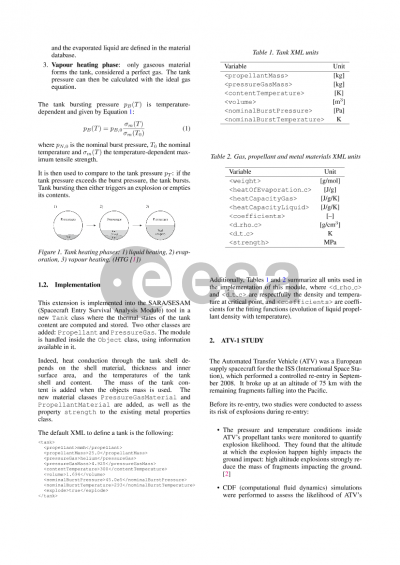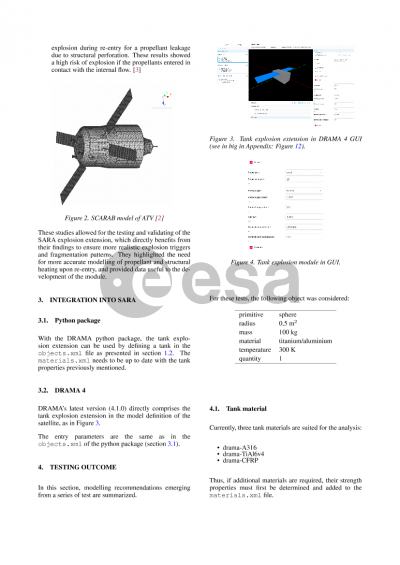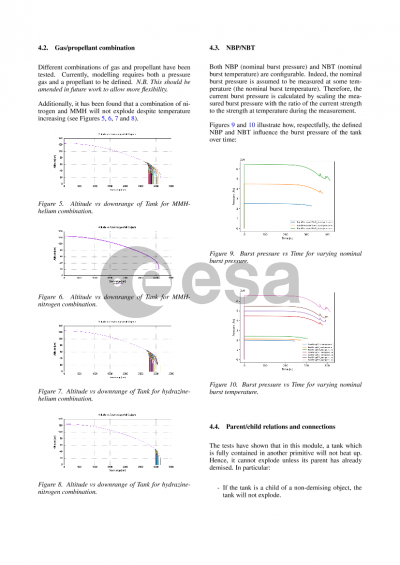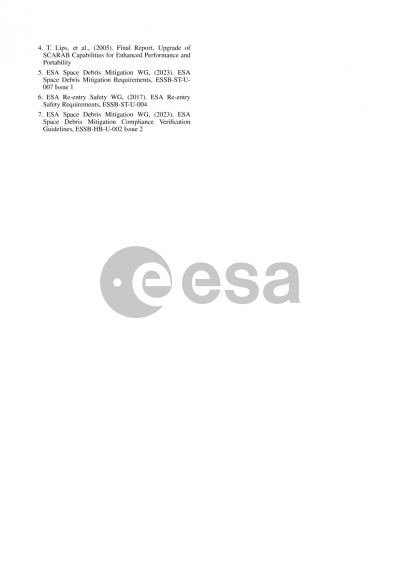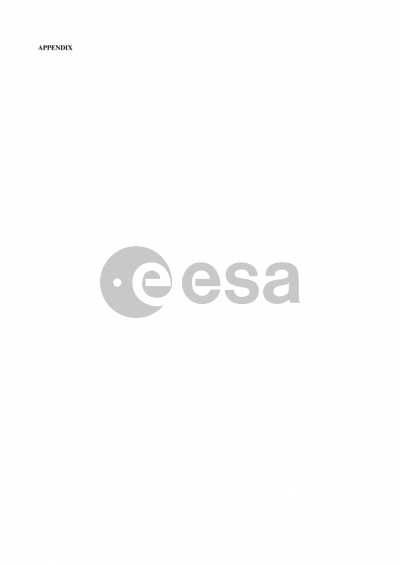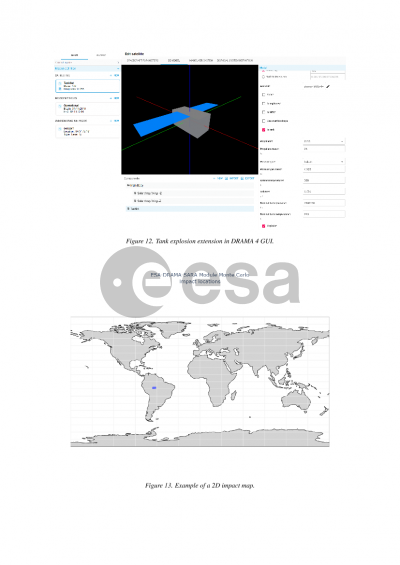Document details

Abstract
The potential for spacecraft explosions during atmospheric re-entry presents a major challenge in space debris engineering. An explosion might cause fragments reaching ground with a much larger spread than without, affecting the safety area of a controlled re-entry. While significant advancements have been made in modelling re-entry dynamics, a longer standing question with limited answers remains: When does a spacecraft explode upon re-entry due to residual fuel?
This work focuses on the tank bursting extension for the DRAMA/SARA (Spacecraft Atmospheric Reentry Analysis) tool included in DRAMA 4.0, originally tested on ATV-1 [1]. However, this implementation simplifies the complex thermal, chemical, and structural interactions that characterise real-word re-entry explosions, leaving room for substantial refinement.
The objective with the tank-bursting extension is to provide space safety and system engineers with a more reliable tool for ensuring compliance with ESA standards (ESSB-ST-U-004 and ESSB-ST-U-007) when implementing a controlled re-entry and hence potentially exploding. These standards emphasise the importance of controlled re-entries and accurate risk assessment, when explosive fragmentation affects impact footprints.
In this work, the sequence of events that can lead to propellant auto-ignition and explosion under extreme temperature and pressure conditions is investigated. Building on previous analyses such as the ATV-1 case [2], this work seeks to refine and validate these predictions against post-flight assessments and observational data, acknowledging the limited direct evidence for explosions during re-entry. Additionally, the novelty lies in applying the model to a component-oriented framework, allowing for realistic adjustments to the sequence of events.
References:
[1] D. E. Boutamine, Ph. Reynier, R. Schmehl, J. Steelant and L. Marraffa (2006). Computational Analysis of ATV Re-entry Flow and Explosion Assessment. E.W.P. 2304
[2] G. Koppenwallner, B. Fritsche, T. Lips, T. Martin, L. Francillout and E. De Pasquale (2005). ANALYSIS OF ATV DESTRUCTIVE RE-ENTRY INCLUDING EXPLOSION EVENTS. Proceeding of the Fourth European Conference on Space Debris.
Preview

